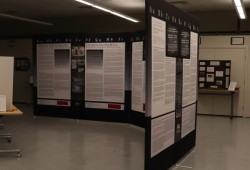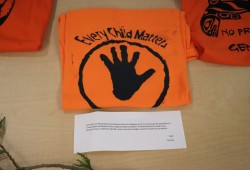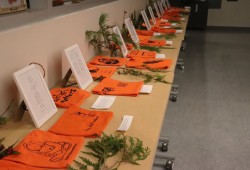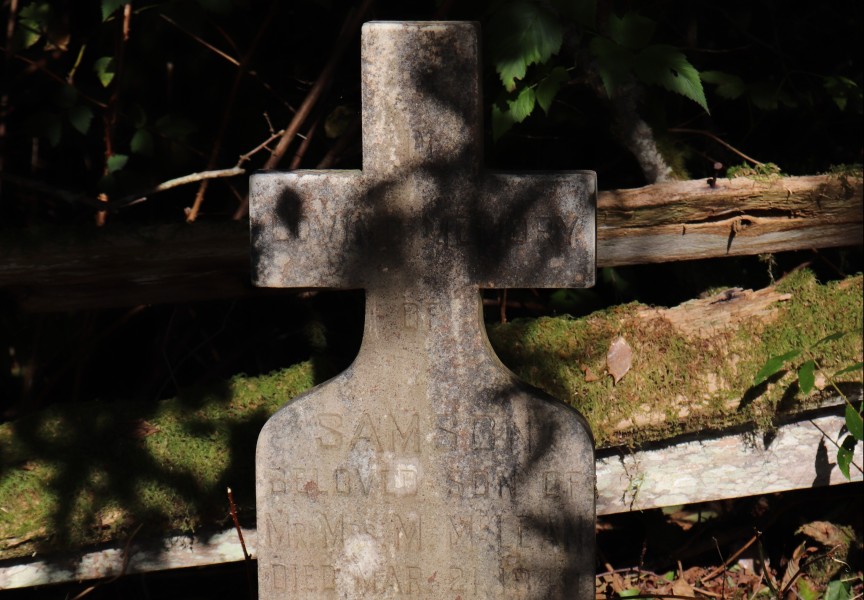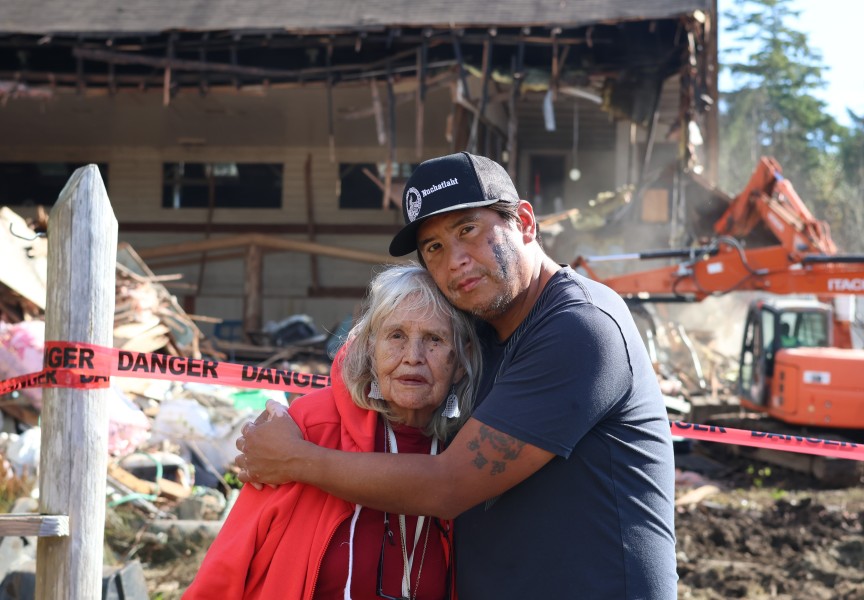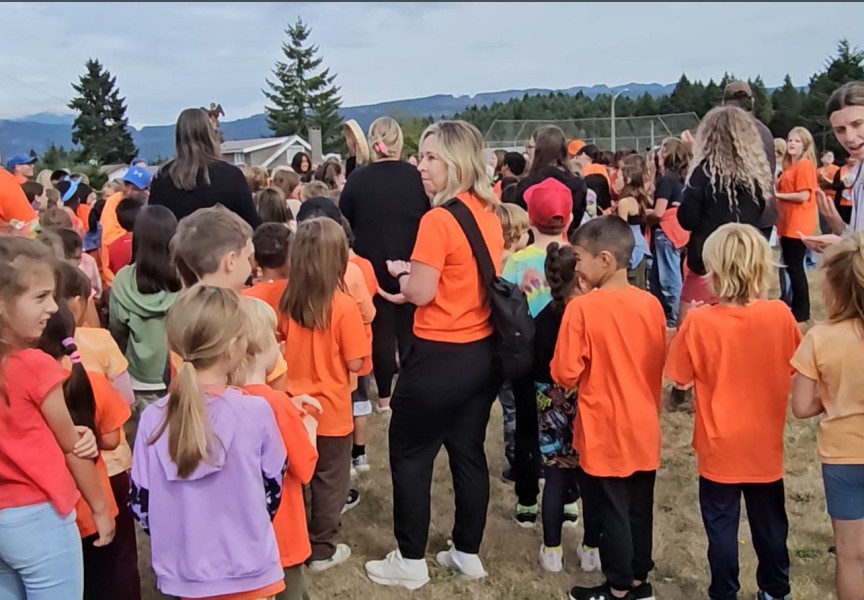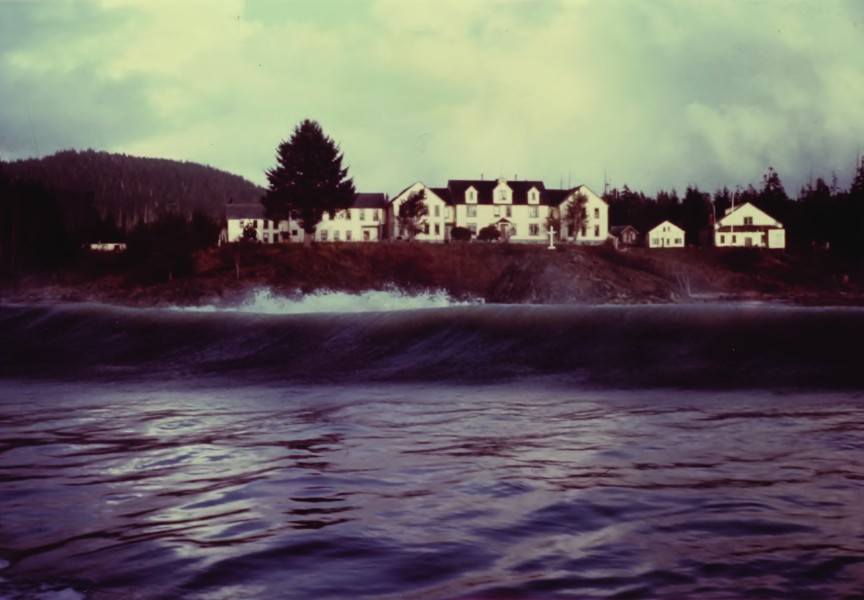Ucluelet Secondary students jumped right into the school year to learn about residential schools, preparing interdisciplinary projects for the third annual Legacy of Hope exhibit in recognition of National Day for Truth and Reconciliation Day on Sept. 30.
When Jason Sam, program coordinator for Clayoquot Biosphere Trust, first started coordinating the exhibit three years ago there were roughly three classes involved in the exhibit. Now there are closer to nine classes involved with students spending the month of September learning about residential schools from survivors, researching and preparing projects of a multitude of disciplines.
Sam refers to the students' participation in the exhibit as “youth-led reconciliation.”
The exhibit is broken down into three components: truth, honor, and a way forward.
For Nuu-chah-nulth students Lee Manson and Calianna McCarthy, their English 11 class researched the Truth and Reconciliation Commission of Canada’s 94 Calls to Action and contributed a detailed account of their chosen Call to Action.
Manson chose Call to Action 49, which calls for churches and faith groups to rescind concepts that affirm colonization such as the Doctrine of Discovery and Terra Nullius.
“It goes in depth about how and what the faith groups and churches did to Native American land and people when they first got here,” she said. “With my call to action it's very important to learn about it and spread awareness about what happened.”
McCarthy chose Call to Action 41, which deals with missing and murdered Indigenous women and girls.
“Together through educating each other we can really make a difference,” she said. “We have to work together to help others heal. A lot of stereotyping gets in the way of people’s cases being solved and finding the answers to people's questions.”
“They’re left with nothing,” added McCarthy. “They don’t know what happened to their family members.”
Prior to working on this project McCarthy said that she knew very little on missing and murdered Indigenous women and girls, while Manson chimed in to add that she did not have much prior knowledge on the 94 Calls to Action.
“I’m glad it’s being taught in schools,” said McCarthy. “Because if we didn’t have this being taught at school, I don’t think I would ever pick up a book and read the Calls to Action.”
“Adults now, they weren’t taught about truth and reconciliation and residential school,” said Manson. “It wasn’t brought up in schooling, it wasn’t mandatory.”
Manson and McCarthy’s teacher, Jess Bennett chimed in to add that they are learning alongside their students.
“Us adults, we don’t have a lot of background, ‘cause it was swept under the rug and not taught,” said Bennett. “It’s nice to see young people pushing us forward.”
“It’s nice to grow together,” added Bennett. “In a generational way.”
Alongside these Calls to Action, the USS multipurpose room is dressed in Nuu-chah-nulth language, poetry inspired by residential school stories, as well as student-designed and printed orange shirts. Cedar-woven pieces also adorn the room, and which presents information about residential schools, the impacts of trauma on the body, and information about nourishment and health at Alberni Indian Residential School.
Among the student projects is an Indian Day School exhibit provided by the Legacy of Hope, an Indigenous-led organization dedicated to providing education on the history and intergenerational impacts of residential schools.
“One of my big focuses is to teach these kids because I was never taught it in high school or university,” said Sam, who prior to organizing the exhibit helped teach about residential schools in classes at USS. “I learn new things every year I go through this.”
“I’m just trying to foster that next generation to grow up and already have that understanding and empathy built into them so when they go out into the world they take it with them,” added Sam.
On Truth and Reconciliation Day, Sept. 30, the community was invited to view the Truth and Reconciliation exhibit from 10 a.m. to 3 p.m.


